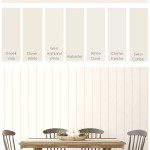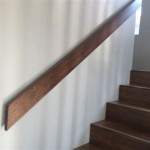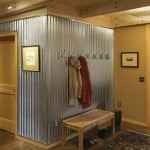Interior Architecture Vs. Design Salary in the Netherlands: 2024 Trends
The Netherlands, with its thriving design scene and innovative architectural landscape, offers numerous opportunities for professionals in both interior architecture and interior design. However, understanding the nuances in roles, responsibilities, and subsequently, salary expectations, is crucial for those pursuing or already established in these fields. This article provides an overview of the salary landscape for interior architects and interior designers in the Netherlands during 2024, highlighting key factors that influence earning potential.
Differentiating between interior architecture and interior design is fundamental when discussing compensation. While both disciplines focus on creating functional and aesthetically pleasing interior spaces, their scope and required skill sets differ significantly. Interior architecture involves a more holistic approach, encompassing the structural elements of the interior, including spatial planning, building codes, and technical aspects such as lighting and ventilation systems. Interior designers, on the other hand, typically concentrate on the decorative aspects, material selection, furniture arrangement, and overall aesthetic appeal of the space.
The complexity and technical demands of interior architecture often translate into a higher earning potential compared to interior design. However, various factors such as experience level, education, specialization, company size, and location significantly impact salary ranges within both professions. This article will explore these factors in detail, providing insights into the salary expectations for interior architects and interior designers in the Netherlands during 2024.
Experience Level and Salary Progression
Experience is a primary driver of salary in both interior architecture and interior design. Entry-level positions typically command lower salaries, gradually increasing as professionals gain experience and develop specialized skills. An entry-level interior architect, with 0-2 years of experience, can expect a starting salary ranging from €30,000 to €38,000 per year. Similarly, a junior interior designer with comparable experience may earn between €28,000 and €35,000 annually.
Mid-career professionals, with 5-10 years of experience, see a substantial increase in their earning potential. Interior architects in this category can expect salaries ranging from €45,000 to €65,000 per year, depending on their skill set and project management experience. Interior designers with similar experience may earn between €40,000 and €55,000 annually. This stage often involves increased responsibility, client interaction, and project leadership, which contribute to higher compensation.
Senior-level professionals, with over 10 years of experience, command the highest salaries in both fields. Senior interior architects, often taking on leadership roles or managing large-scale projects, can earn upwards of €70,000 to €90,000 or even more per year. Senior interior designers with extensive experience and a strong portfolio can expect salaries ranging from €55,000 to €75,000 annually. At this level, specialization, proven track record, and the ability to attract and retain clients become critical factors influencing salary.
Freelance professionals in both fields often experience variable income, dependent upon project volume, client negotiations, and personal marketing efforts. While potential earnings can be substantial for experienced freelancers, income stability can be less predictable compared to salaried positions.
Impact of Education and Specialization
Education plays a significant role in shaping earning potential, particularly in interior architecture. A master's degree in architecture or a related field is often a prerequisite for higher-paying positions and career advancement. While a bachelor's degree in interior design is generally sufficient for entry-level roles, pursuing a master's degree or specialized certifications can enhance career prospects and earning potential.
Specific certifications, such as those related to sustainable design (LEED) or building information modeling (BIM), can be particularly valuable. These certifications demonstrate specialized knowledge and expertise, making professionals more attractive to employers and clients. Interior architects with expertise in BIM, for example, may command higher salaries due to their ability to contribute to efficient project execution and collaboration.
Specialization within either interior architecture or interior design can also significantly impact salary. For instance, specializing in healthcare design, hospitality design, or sustainable design can lead to higher demand and increased earning potential. Professionals with expertise in niche areas are often sought after for specific projects, allowing them to charge premium rates for their services.
The Dutch design education system is highly regarded, and graduates from recognized institutions generally have better career prospects. Networking, internships, and participation in industry events during the educational period are also crucial for gaining practical experience and building connections that can lead to employment opportunities.
Company Size, Location, and Industry Sector
Company size is another factor that influences salary levels. Larger firms, with more complex projects and greater financial resources, typically offer higher salaries compared to smaller design studios. Multinational corporations and established architectural firms often have well-defined compensation structures and benefits packages, contributing to higher overall earnings.
Location within the Netherlands also plays a role in determining salary. Major cities like Amsterdam, Rotterdam, and The Hague, which serve as centers for design and architectural activity, generally offer higher salaries compared to smaller towns or rural areas. The cost of living in these cities is also higher, which influences the compensation levels required to attract and retain talent.
The specific industry sector can also impact salary expectations. For example, interior architects working on large-scale commercial projects or high-end residential developments may earn more than those focusing on smaller, less complex projects. Similarly, interior designers specializing in luxury retail or hospitality design may command higher salaries compared to those working on more budget-conscious projects.
The demand for sustainable and eco-friendly design solutions is growing in the Netherlands, and professionals with expertise in this area are increasingly in demand. Companies that prioritize sustainability often offer competitive salaries to attract and retain professionals with the relevant skills and knowledge.
Government initiatives and regulations related to building and construction also impact the demand for interior architects and designers. Changes in building codes, energy efficiency standards, and accessibility requirements can create new opportunities and increase the demand for specialized expertise. Professionals who stay informed about these developments and adapt their skills accordingly are well-positioned to benefit from these trends.
The Dutch economy, in general, influences the overall job market and salary levels in all sectors, including interior architecture and design. Economic growth typically leads to increased construction activity and demand for design services, driving up salaries. Conversely, economic downturns can lead to reduced demand and potential salary stagnation or even reductions.
Professional organizations, such as the BNA (Royal Institute of Dutch Architects) and the BNI (Association of Dutch Interior Architects), provide resources and support for professionals in the field. These organizations offer salary surveys, networking opportunities, and continuing education programs that can help members advance their careers and increase their earning potential.
Negotiating salary effectively is crucial for maximizing earning potential. Researching industry benchmarks, understanding one's own value, and clearly articulating skills and experience are essential for successful salary negotiations. Demonstrating a strong understanding of the market, presenting a compelling portfolio, and highlighting achievements can significantly influence the outcome of salary discussions.
In conclusion, the salary landscape for interior architects and interior designers in the Netherlands during 2024 is influenced by a complex interplay of factors, including experience, education, specialization, company size, location, and industry sector. Understanding these factors and proactively developing relevant skills and knowledge are key to achieving professional success and maximizing earning potential in these dynamic fields.

Interior Designer Average Salary In Netherlands 2024 The Complete Guide

Salary Scales Vs Abroad Architects Interior Graphic Project Manager Rtf Rethinking The Future

Salary Scales Vs Abroad Architects Interior Graphic Project Manager Rtf Rethinking The Future

Interior Designers Architects In The Netherlands

Salary Scales Vs Abroad Architects Interior Graphic Project Manager Rtf Rethinking The Future

Top 10 Best Countries For Interior Design Jobs

Help What Can I Do With A Degree In Architecture Or Interior Design 15 Career Options

Architectural Design Process Its 7 Phases Explained 2024
/49x0:617x385/prod01/channel_3/media/middlesex-university/courses-images/pg---course-masthead-images/2024X2f25/arts-and-creative-industries/Interiors_herobanner-3.jpg?strip=all)
Interiors Architecture And Design Ma 2024 Middlesex University

Architecture Exhibitions Tag Archdaily
Related Posts








